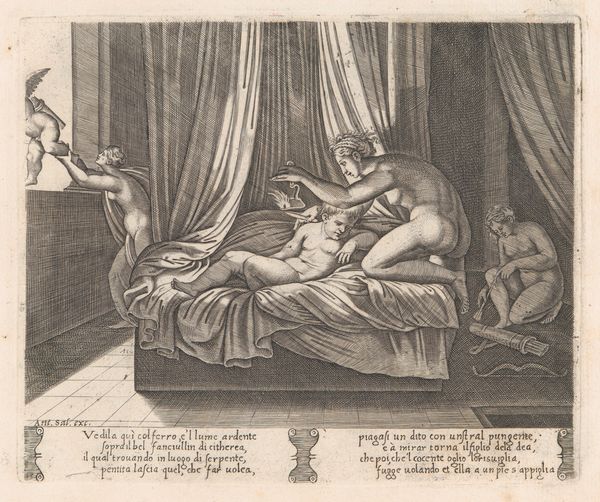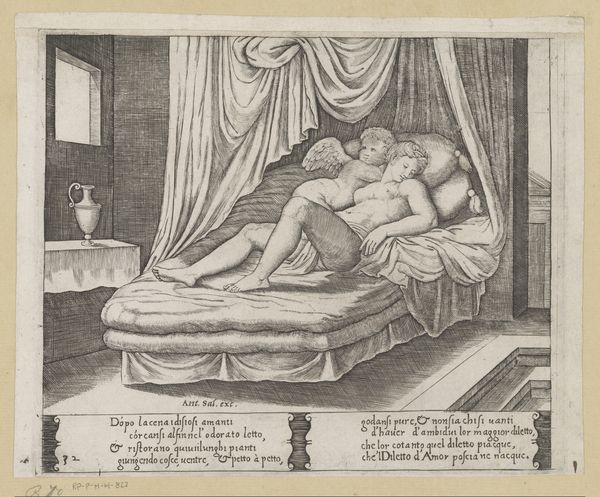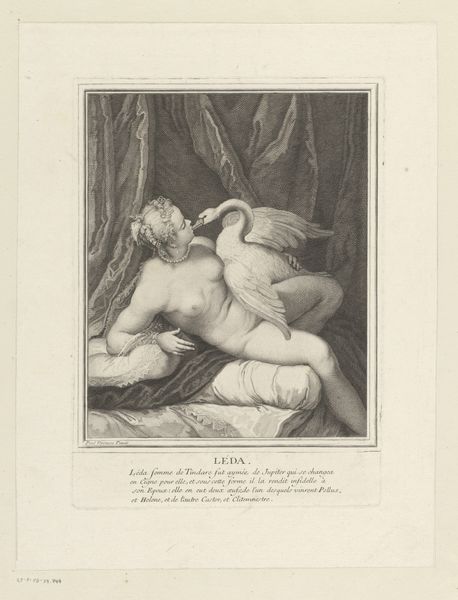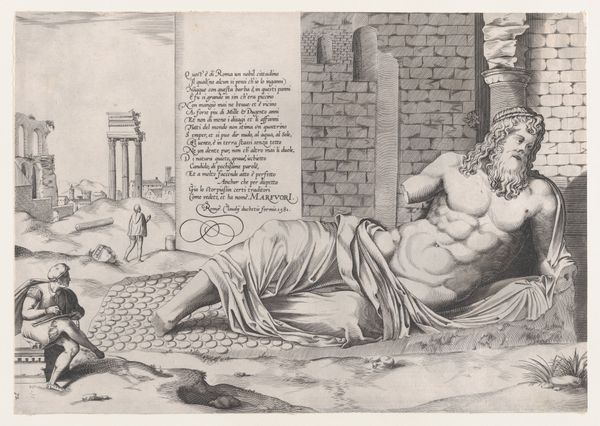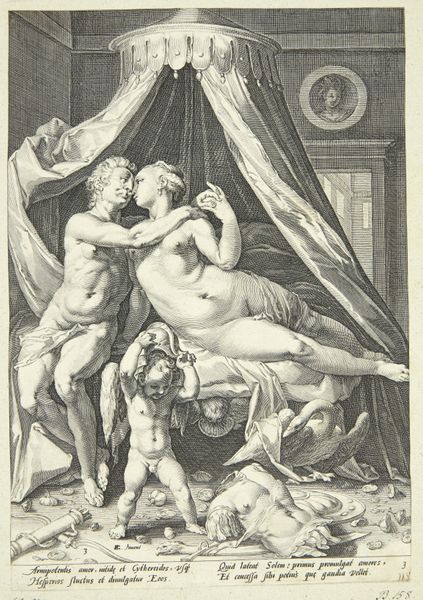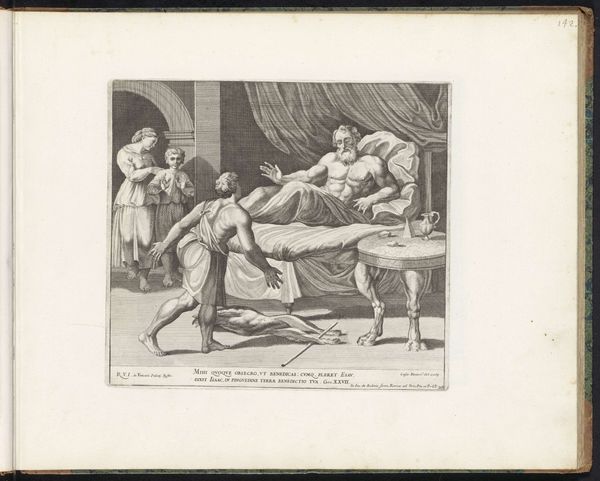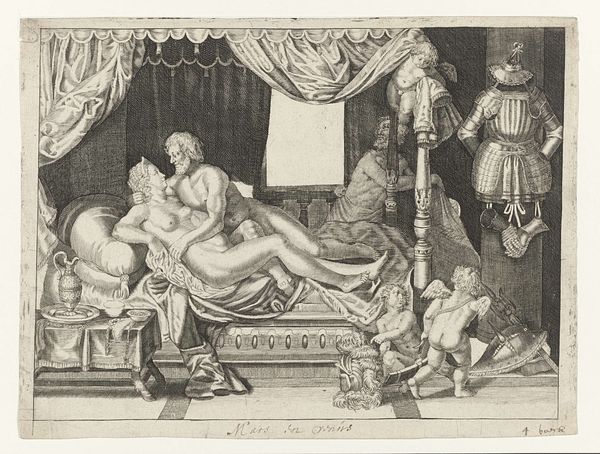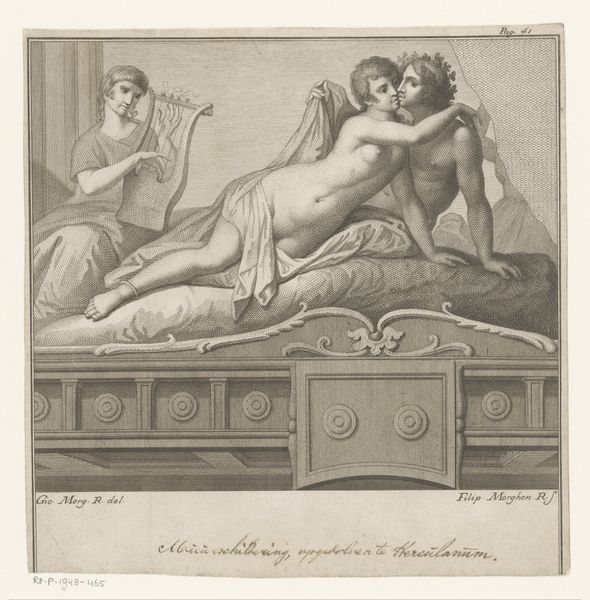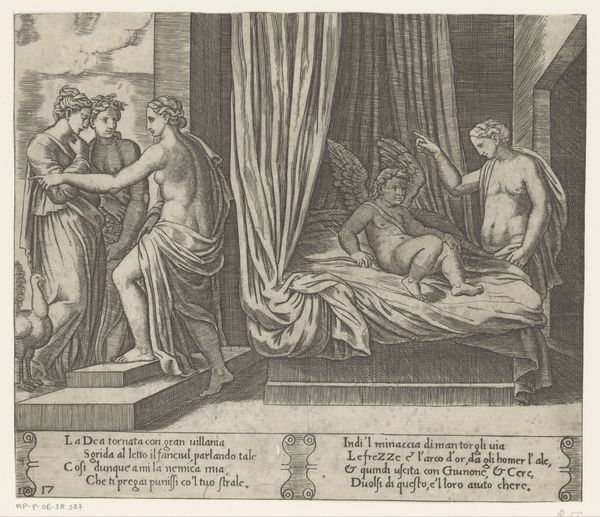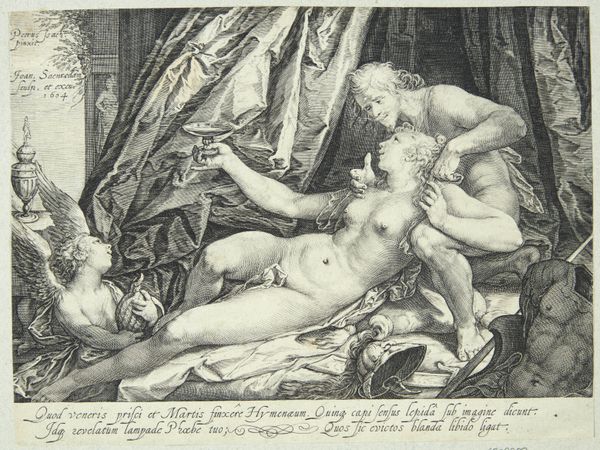
engraving
#
allegory
#
old engraving style
#
cupid
#
italian-renaissance
#
nude
#
engraving
#
erotic-art
Dimensions: height 195 mm, width 228 mm
Copyright: Rijks Museum: Open Domain
Curator: Let’s discuss “Amor en Psyche als geliefden,” an engraving crafted circa 1530-1560, now housed at the Rijksmuseum. The work is credited to the Master of the Die, known for their proliferation of prints across Italy and Northern Europe during the High Renaissance. Editor: My first impression is of stark contrasts, a somber yet sensual scene created through intricate, almost obsessively detailed crosshatching. The subjects seem caught between vulnerability and erotic display. Curator: The engraving portrays a very intimate moment from the classical myth. Cupid, usually an archer as you can see by the discarded weapons on the floor, embraces Psyche after they have made love. The abandonment of the bow and quiver suggests love surpassing mere carnal desire, alluding to psychological union and spiritual completion. Editor: Indeed, there is an abandonment suggested by the discarded weaponry, but notice also how Cupid is depicted on top of Psyche. Structurally, this highlights not equality, but rather dominance—visually reinforcing the inherent power dynamics and social positions prevalent in Italian Renaissance representations of gender. It challenges any purely symbolic reading of mutual completion that would obscure that dynamic. Curator: I understand your emphasis, but there's something profoundly sympathetic in their embrace. There's an awareness of touch here, as we examine the intimacy from a distance of centuries; an immortal God intimately tied to mortal concerns, mirroring perhaps, our own complex entanglement with earthly desire and the hope for transcendence. Editor: Fair enough. There is undeniably great emotive depth achieved through relatively basic materials—metal and ink on paper, used to such convincing effect, especially regarding shadow and form. The almost sculptural quality achieved simply through line and tone continues to resonate, forcing one to admire the artist's control over their medium. Curator: Ultimately, it’s a moving portrayal of love’s contradictions: powerful and disarming, sensual yet steeped in the language of psychological allegory. The myth retains its emotive significance across millennia. Editor: Agreed. And dissecting the formal and symbolic tensions at play only enriches our appreciation of its nuanced beauty, the ways in which it reveals more with each viewing.
Comments
No comments
Be the first to comment and join the conversation on the ultimate creative platform.
